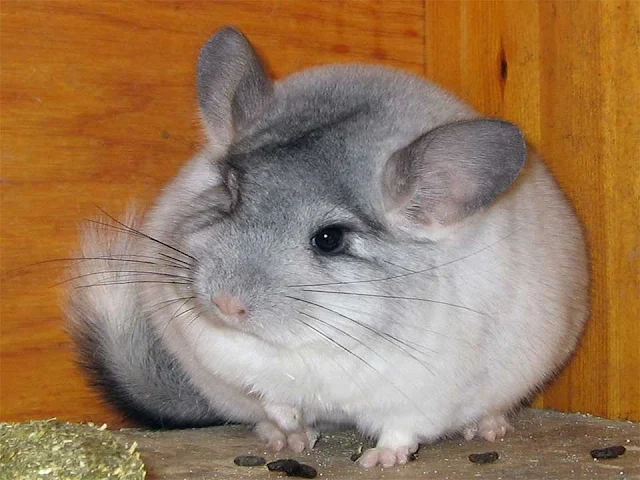Chinchillas are the two species of “crepuscular rodents” of
the “parvorder Caviomorpha”. They are somewhat bigger and more healthy than
ground squirrels and are innate to the ‘Andes Mountains’ in South America.
Chinchillas live in groups called ‘herds’ at high elevations
of up to 14,000 feet (4,270 meters). Generally, chinchillas lived in some areas
of Bolivia, Peru, Argentina, and Chile, but now the wild colonies are more famous
in ‘Chile’. Along with their families, viscachas, they form a family “Chinchillidae”.
Chinchillas are more similar to the ‘chinchilla rat’.
Chinchilla has the most solid hair of all mammals that are alive
on the earth. In the water, sea-otter has a thicker coat. Maximum chinchillas are
now being used by the fur-industry for making cloths and other accessories.
Chinchillas are occasionally retained as pets and maybe deliberated a type of
pocket-pet.
Chinchilla Species
The two existing breeds of Chinchilla are “Chinchilla
Brevicaudata” and “Chinchilla Lanigera”. The Chinchilla Brevicaudata has a smaller
tail, a denser neck and shoulders, and smaller ears than ‘Chinchilla Lanigera’.
The previous breed is now facing extinction which is though rare but can be seen
in the wild. The tame Chinchillas are considered to have come from the “Chinchilla
Lanigera” breeds.
Fur Industry
The worldwide trade in Chinchilla-fur goes back to the sixteenth
century. Their fur is common in fur-trade due to its very soft texture. The
color is generally very smooth, which makes it perfect for small clothes or the
coating of big clothes, however, some large garments can be made completely from
the Chinchilla’s fur.
Chinchillas as Pets
The domestic Chinchillas are derived from ‘Chinchilla
Lanigera’ that are long-tailed Chinchillas and very famous in the wild after other
breeds such as Chinchilla Brevicaudata or short-tailed Chinchilla which have
been hunted and are close to extinct. They have heavy figures, lengthier
tails, and bigger ears.
Chinchillas are common pets but need great care. They should
only be bought by skilled pet-owners who are conscious of their needs.
Chinchillas must have broad exercise and dental-care due to the continuous growth of
their teeth all over their lives, and since they lack the capability to perspiration,
temperatures need to be prudently organized. The Chinchillas should be kept at an
atmosphere of 16°C to 21°C (60°F to 70°F).
The Chinchillas impulsively clean their hair by taking dust-baths,
in which they roll around in different dust made of fine pumice, few times in a
week. The Chinchillas do not take bath in the water. If they get wet, they
should be dried off promptly, otherwise, their fur will raise fungus and can perhaps get a skin infection.
Distribution and Habitat
 |
| Andean chinchilla habitat in Chile |
Earlier, chinchillas engaged the seaside areas, hills, and crags
of Chile, Peru, Argentina, and Bolivia. Over-exploitation produced the recession
of these populations, as early as 1914, one scientist requested that the breed
was controlled for extinction. The Chinchillas may be extinct in Bolivia and
Peru, however one sample found may hail from an innate populace.
In their natural habitations, Chinchillas live in holes or gaps
in rocks. They are agile jumpers and they can jump up to 1.8 meters (6 feet). The
predators in the wild comprise birds of prey, skunks, felines, snakes, and
canines. The Chinchillas have a range of protective strategies, comprising
spraying urine and releasing fur if bitten.
In the wild, Chinchillas have been seen eating
plant leaves, fruits, seeds, and small insects.















0 Comments